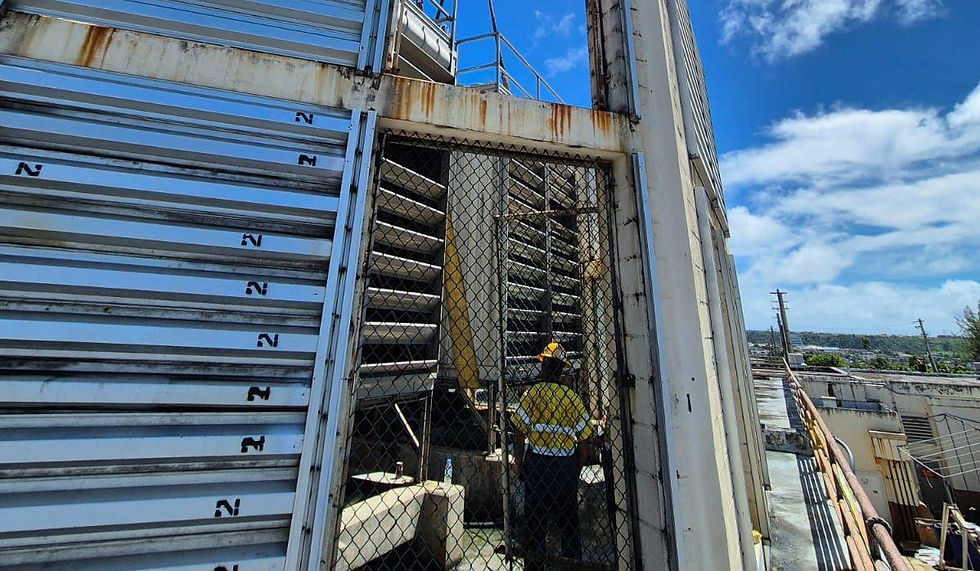Open burning and open detonation safer than other options, JRM says
- Admin

- Oct 4, 2022
- 3 min read

By Mar-Vic Cagurangan
Seeking to allay public worries about open burning and open detonation, the Joint Region Marianas reassured the Guam community that the methods adopted by the military to dispose of hazardous waste are safe and legal.
JRM issued the clarification following the District Court of Guam’s recent decision, tossing out the lawsuit filed by the environmental groups Prutehi Litekyan and Earthjustice, alleging that the U.S. Air Force plans to detonate 35,000 lbs. of bombs and burn other hazardous waste munitions each year in the open air on Tarague Beach.
“Under the current open burn/open detonation permit, in 2021 we disposed of 470 lbs of explosives, and only 100 lbs in 2022 so far,” said Katherine Koenig, public information officer for JRM.
She added that “35,000 lbs of explosives do not exist for disposal on the range, and there is no plan or need for this grossly exaggerated amount of munitions to be destroyed.”
While the military is authorized to conduct open burning, Koenig said records indicate that such a procedure has not been done at Andersen Air Force Base in over 10 years.
The Department of Defense uses open burning or open detonation to demilitarize or destroy waste military munitions that are damaged, expired, or remnants from previous wars.
“Open burn is a procedure that is authorized when disposing of large quantities of small arms ammunition (.556 or 9mm),” Koenig said in an email.
Koenig explained that open burning requires a large trench filled with combustible material placed below the disposal ammunition. “The combustible material is ignited to consume the powder within the ammunition,” she added.
As of March 2019, the DoD had 34 sites in 20 states and Guam with open burning and open detonation permits, according to the DoD Office of Inspector General's report released in November 2021.
“In general, this procedure is normally conducted at large range bases within the United States," Koenig said.
The report noted that DoD installations use open burning and open detonation when they do not have viable resource recovery and recycling or contained disposal options.
"DoD installations reported treating over 17 million lbs of waste military munitions by open burning and open detonation per year between 2013 and 2017," stated the report. "The DoD open burning and open detonation operations generally complied with relevant environmental laws and agreements."
ADVERTISEMENT

As for open detonation, Koenig said this method has been determined to be the cleanest and safest way to dispose of deteriorated munitions left over from past wars.
“The detonation does create byproducts such as nitrogen, water, carbon monoxide, and carbon (soot), but most of these chemicals are consumed during the explosion,” she said.
In response to concerns about the close proximity of the burning and detonation pits to Yigo and Dededo, the island's two most populated villages, Koenig said, "water testing is done periodically to ensure that no toxic chemicals are found in the aquifer."
In a memo released in June, the U.S. Environmental Protection Agency noted that open burning of hazardous waste and open detonation are currently prohibited under the Resource Recovery and Conservation Act except for waste explosives, "which cannot safely be disposed of through other modes of treatment."
"Because new technologies routinely become available, a facility must periodically reevaluate, e.g., at permit issuance and renewal, whether this condition has been met to maintain compliance with this requirement," EPA said.
In a 2019 report, the National Academies of Sciences, Engineering and Medicine identified candidate alternative technologies that have the potential to demilitarize an entire munition.
These technologies are grouped into two categories:
Contained detonation, where an entire munition is demilitarized/destroyed in an enclosed chamber with an associated pollution abatement system; and
Contained burn, where a munition is thermally treated in an enclosed chamber, typically an incinerator or a furnace combined with a pollution abatement system.
"For many munitions, it is not feasible to demilitarize the whole munition using a single alternative technology due to technical, safety, environmental, or cost issues," states the report titled "Alternatives for the Demilitarization of Conventional Munitions."
"Alternative technologies have both pros and cons. Implementing alternative treatment technologies for munitions that are currently treated via OB/OD will result in reduced emissions but will be associated with increased capital and operating costs, although with lower closure costs," the report said.
Koenig said the proposed alternatives are "heavily toxic to the environment and would create a large amount of waste that would have to be dealt with after the fact."
She noted that the munitions found on Guam are in various stages of decomposition and the condition of the explosives is unknown. "This inherently creates a much more hazardous situation for the residents here on Guam," she said.
Subscribe to
our digital
monthly edition






